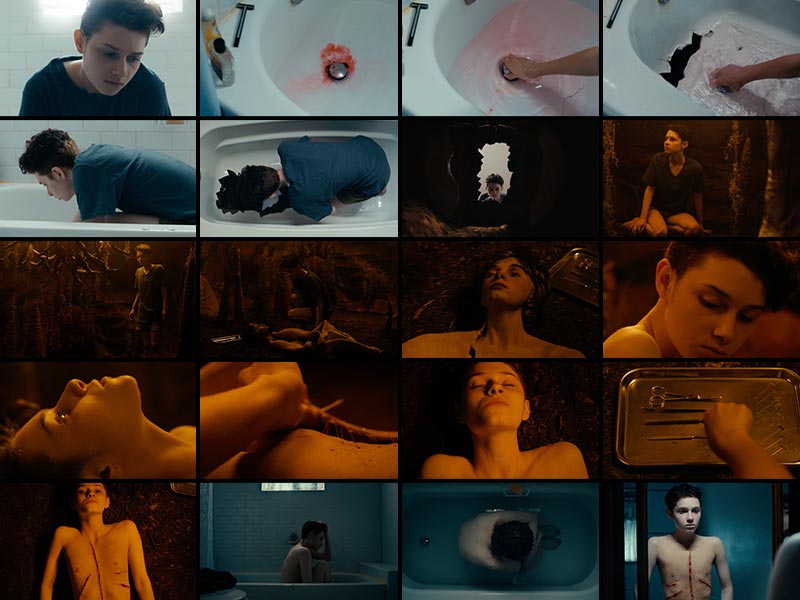Today we revisit one of the most underestimated films we’ve had on Film Shortage. Audrey Rosenberg’s self-discovery masterpiece ‘Skin‘. Not only is the film’s theme deep rooted and eye opening, but it also holds a hidden gem of a scene. A scene that disembarks us from reality only to metaphorically depict the reality of self-discovery. Alright, it might be easier if you watch the film. We really encourage you to watch the film to fully understand. Look out for the cave scene which runs from 10:00 to 15:50, which is the scene we will break up with director Audrey Rosenberg.
Breaking It Down
The scene starts after Charlie, a struggling queer teenager, witnesses their brother getting into a fight on their defence. As Charlie prepares for a bath while reflecting, a strange blood-like liquid starts to come through the drain. Curious, as Charlie tries to understand what is going on, the bathtub literally starts to crumble, leaving a gaping hole. On the other side: a long tunnel into darkness.
Inside the cave, we see hands touch soil, Charlie has made it through. Crawling through dirt and roots, a rumbling breathing sound makes the cave sound alive. Charlie continues to explore the cave until they find a suspicious flesh-like material on the ground. As they inspect closer, we notice it is a full body skin suit with a face that resembles Charlie. Next to it, a tray with surgical tools. It becomes clear, Charlie has found their new skin. Charlie strips and lies down next to the skin, the metamorphosis begins in graphic fashion as a close up of stitching flesh takes up the screen. We see tears drip down Charlie’s golden face, of pain certainly, but also of relief as we zoom out to unveil a giant scar running down the length of the torso.
Charlie then awakens back in their bathtub, and curls up in a ball. In the middle of an undamaged tub filled with water. The next scene, Charlie stands in front of the mirror with the visible giant scars.
This highly graphical scene is one that really stuck with us. From its concept to its meaning, we found it to be a pivotal scene that really helped bring the film to another level. We reached out to director Audrey Rosenberg to help us break down the scene from her perspective.
Can you tell us what this scene meant for the progression of the film?
Audrey: This scene for me is reflective of the first time Charlie really looks inward. They’ve hit adolescence, they know they’re different, but this is the moment they’re considering the role they have in their own identity. To me it’s an empowering action that they take to enter the cave and brave the unknown, to put on the skin, to put in the time to understand who they are and envision a life for themselves in which they know who they are.
Such a pivotal moment in the film, but particularly in the teenager’s life. Did you have any source of inspirations for the setting this scene? Where did the idea come from?
Audrey: I wanted the setting for this sequence to be an inherently “natural” setting (in the sense that Charlie’s literally crawling through the dirt and mud) but I also wanted it to feel really human and alive. That’s why I wanted to bring in a “breathing” effect in visual effects, where the walls really subtly expand in and out, and we can hear a grumbly breathing soundscape. Visually tying Charlie’s roots as a human to literal roots in the dirt to me felt like an important study of human identity.
Beyond feeling human, I really leaned into the idea that the cave was a womb-like space for Charlie to return to. This is where they came from, and this is where they’ll return to redefine themselves. It’s scary, it’s terrifying, but it’s also the safest internal place for them to understand themselves.
Visually, I was also very inspired by the setting of Ofelia’s first task in Pan’s Labyrinth. That too felt like an all-encompassing, warm, terrifying and “alive” space for her quest — something that felt quite similar thematically to Charlie’s journey in this moment, despite the very different plots.

What was your preparation process for the scene, from script to storyboarding?
Audrey: Since the scene is so physical, I knew that the only rehearsal that would really matter with Rhys would be when he could get into the space itself and react authentically to the actual environment around him. Beyond that, I storyboarded religiously, really thinking about the various “beats” in the scene that Charlie goes through: the discovery of the skin, the idea of putting it on, the sewing, and the view of the tree (and view of themselves, changed). The storyboards were also essential for me to understand what parts of the cave I had to build, since this environment was entirely created from scratch.
(Below pictured: the “tunnel” portion of the cave and the “entryway” portion of the cave, which were both built as separate add-ons to the cave itself.)
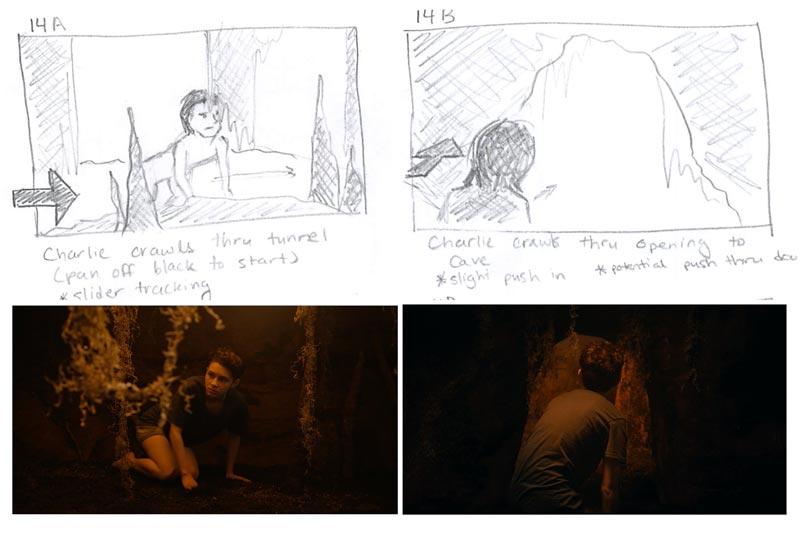
Let’s start from the beginning of the scene, the bathtub/cave opening up: Can you tell us how this shot was created?
Audrey: Since we didn’t have even remotely the budget for how ambitious this sequence was, and because I have a background in production design, I knew from the start that I’d be building the cave and SPFX bathtubs myself. I posted up in a warehouse for a few weeks building the cave, the “tunnel” portion of the cave, and three separate bathtub rigs.
I knew I’d have to model the bathtubs off the practical location of the bathroom, so we chose a bathroom we could replicate with simple materials from Home Depot. Each bathtub was set at a different height (so as to accommodate shots from below and above) and each had different chunks taken out that we could shoot “in sequence” as the bathtub progressively broke. The first part of the process was simply making every SPFX bathtub look like it belonged in the practical bathroom, with tile and hardware:
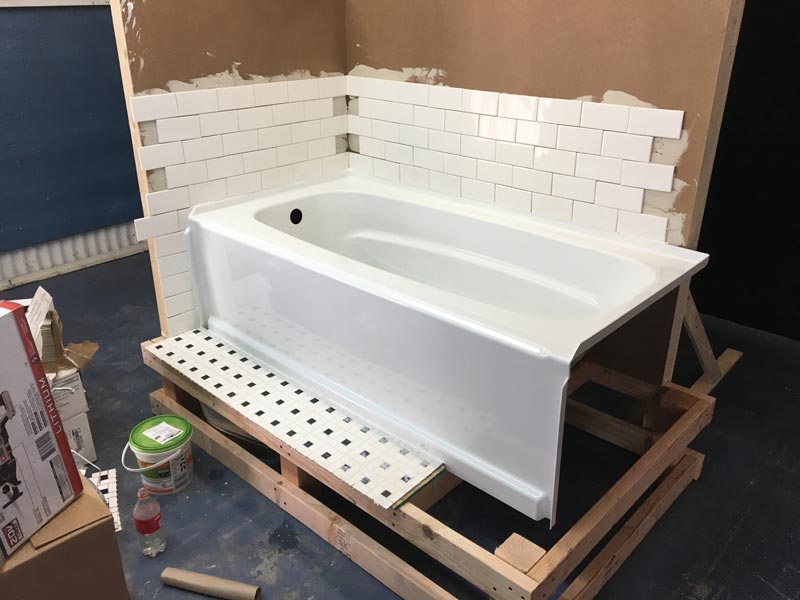
Then, we cut out pieces of the tub that were going to be the hole to the cave, and made acrylic pieces of the same shape that we “reset” in the tub for Rhys to pull out easily during the scene. The VFX artist was then able to paint out the seams in the acrylic, so it looked like the tub was practically breaking in real time.
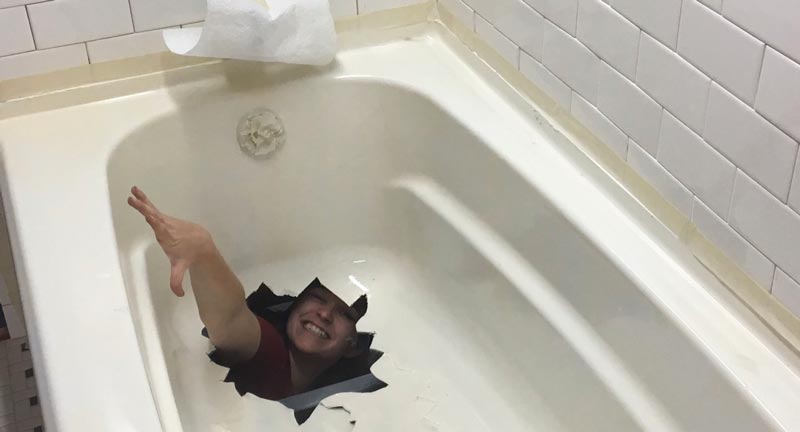
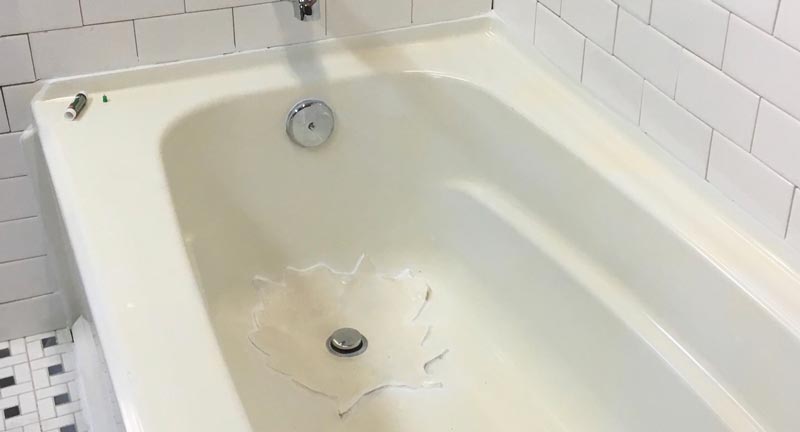
We did the same process with all three tubs, each tub adding a subsequent piece to be broken.
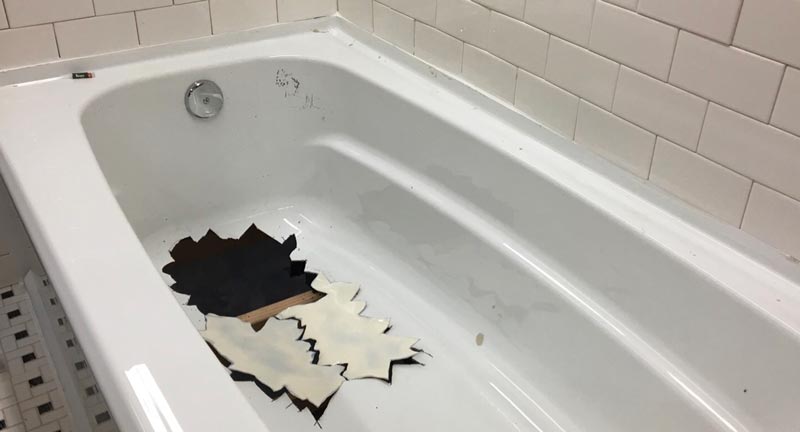

To be honest, I had never seen this done and had never done it before. I have no experience in special effects. So this was essentially dedicated trial-and-error. We certainly ran into a myriad of issues with the tubs (water draining too quickly, imperfect cuts, etc.) and had to shoot and cut creatively, a lot of closeup usage and clever editing. To me, in the end, it was the performance, edit and sound design working in tandem with the practical and visual effects that sells the moment — not just one element independently.
Then, to get in the cave, VFX artist Ben Kadie completely took the cake with a set-extension and made this shot (which was just a static shot, the broken tub standing up on its side, and Rhys kneeling behind it):
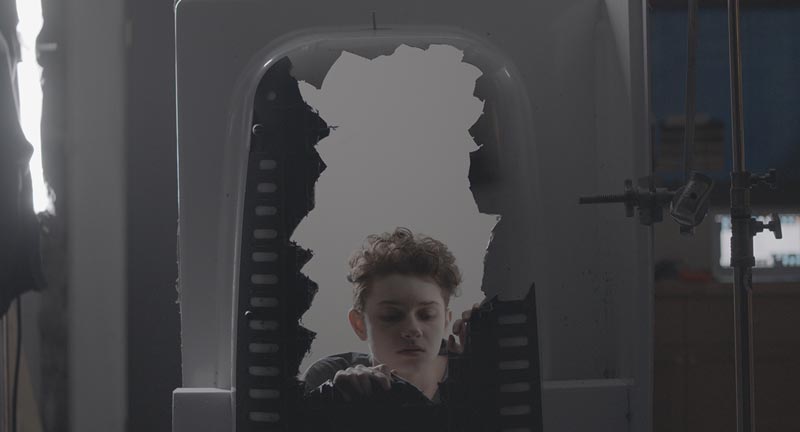
Into this:
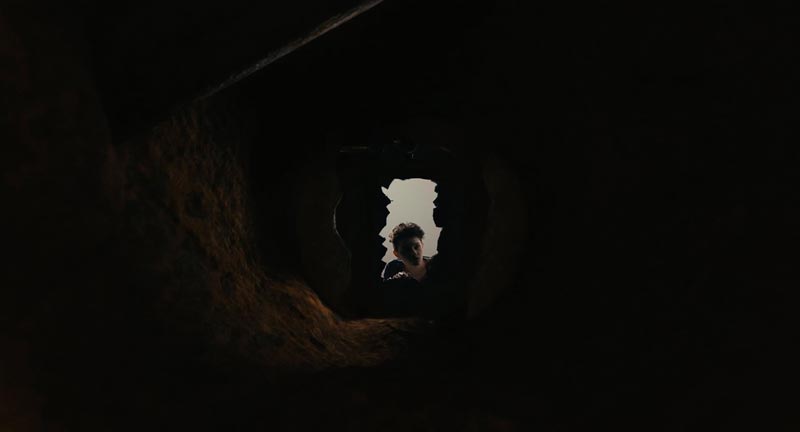
I think watching him do this set extension was a moment in post-production I felt a real shift into magical. We always knew this would be a big, fantastic, transformational moment — so after Ben and I completed the shot, I spent a lot of time working with Elle and Amanda, the sound designer and composer respectively, on building a terrifying and electric soundscape that would draw our character (and viewer) in, and signify the gravity of the moment.
Take us inside the cave. The film turned on a dime and suddenly became a Fantasy film with its outstanding new setting. Can you tell us how you put this world together?
Audrey: From conception, I wanted this space to be both terrifying and beautiful — that is what my process of self-discovery felt like in adolescence: intense, exciting, scary, kind of magical. It was also helpful to me to look at the cave in terms of being a sort of womb space, which informed a lot of the color choices, the lighting, and the sound design. I wanted the space to feel alive — like Charlie was inside something bigger than them, going back to the place where it all began.
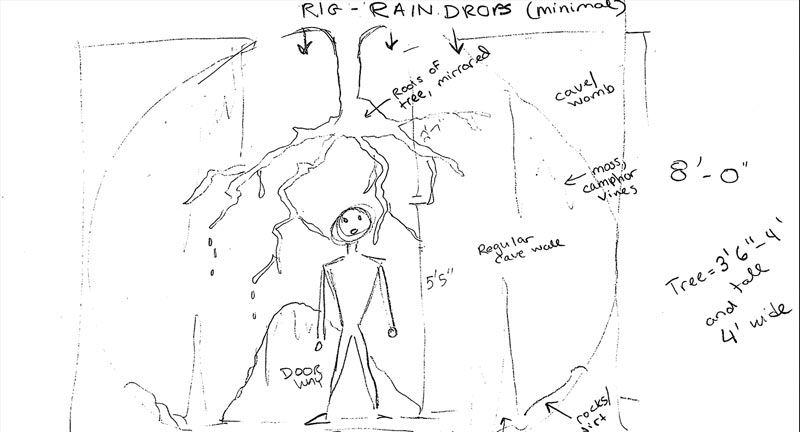
For the most part, the worldbuilding process was just experimentation. (In fact, about a week and a half into the process, the entire cave fell apart and I had to start again with only a week and a half left. I won’t pretend I didn’t lose my mind a little bit. I cried and then started over with a new method.)
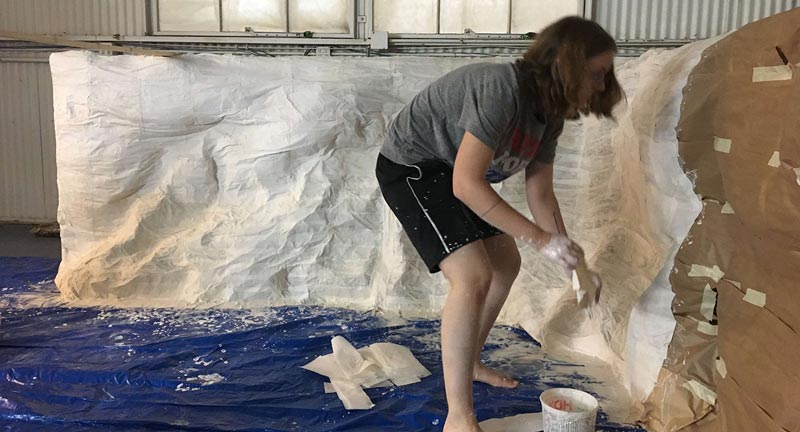
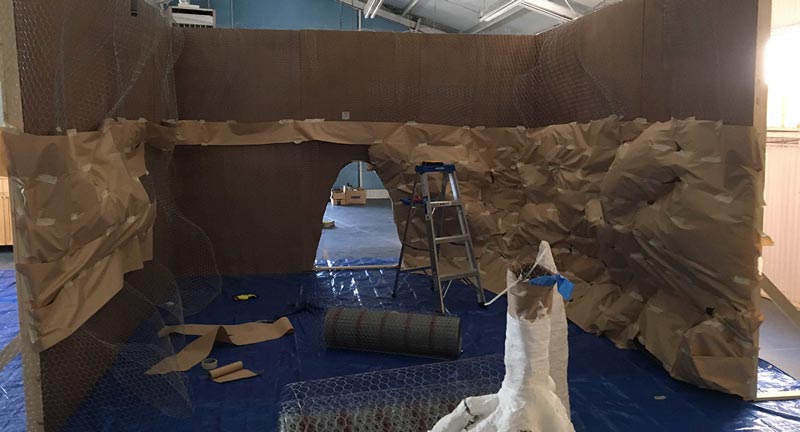
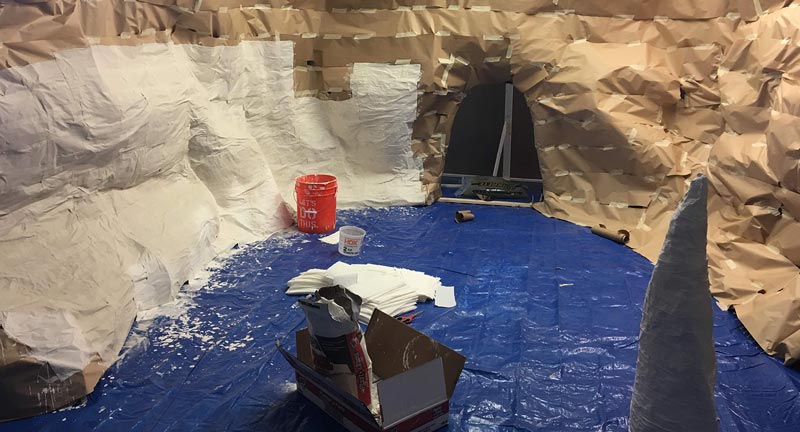
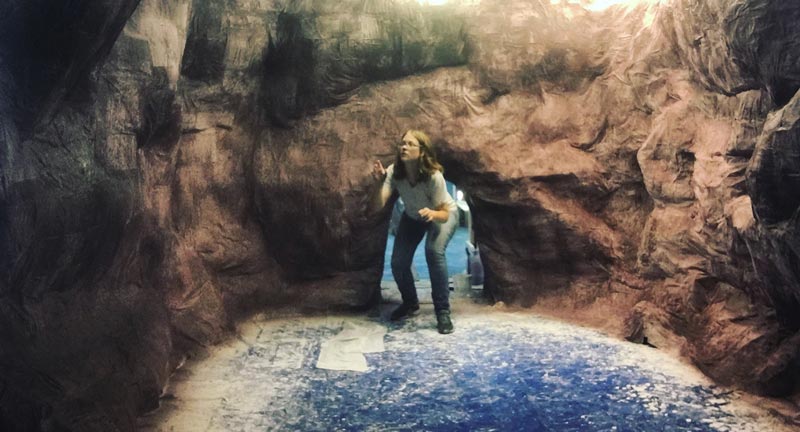
With dirt, vines, greens, and a lot of paint, we landed at this:
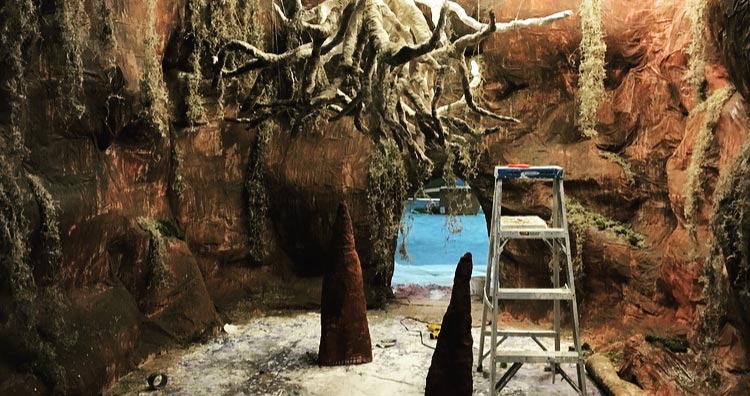
From there, my cinematographer Brandon Somerhalder and I had the luxury of walking through the space together and choosing our shots. We had decided we wanted to implement a lot of really warm, orange light in conjunction with Ben Kadie’s “breathing” visual effects that he applied to the cave walls. To make the space scary, sure, but ultimately a space of safety and rebirth.
Finally, Brandon and I had both decided early on that this would be the most intimately, “internally” shot scene of the film — so we stayed with Rhys in fluid closeups through most of the scene. I really wanted to play with Charlie’s rebirth and growth through their interaction with the world underground — and one of my favorite moments, which materialized so beautifully from script to screen was Charlie’s view of the tree roots above them, which to me really played to this idea of “from our lowest points we grow”:

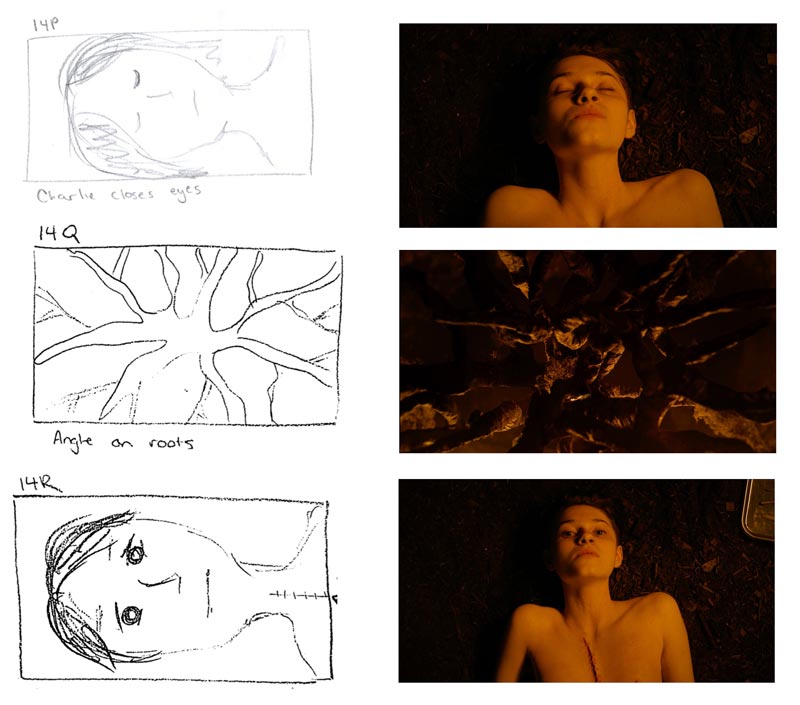
What did the rumbling breathing or growling represent exactly? It certainly enhanced the terrifying setting.
Audrey: The breathing and growling was a way for us to make the space feel alive — like Charlie wasn’t just underground, in a cave, but was inside a living, breathing being. Like I mentioned before, the cave to me was more a womb — a place that Charlie came from, and a place they return to to redefine themselves. So I think yeah, it was important for the space to sound scary in the sense that it’s unfamiliar, but I think there is also this aliveness that’s almost warm and comforting in a way.
Symbolizing self-discovery by literally finding a new skin couldn’t get any more raw… until we see the new skin being sown on. Quite graphic and marking. How were the prosthetics made for that?
Audrey: We had Rhys sit for his face cast, which frankly is the most terrifying part of the process to me.
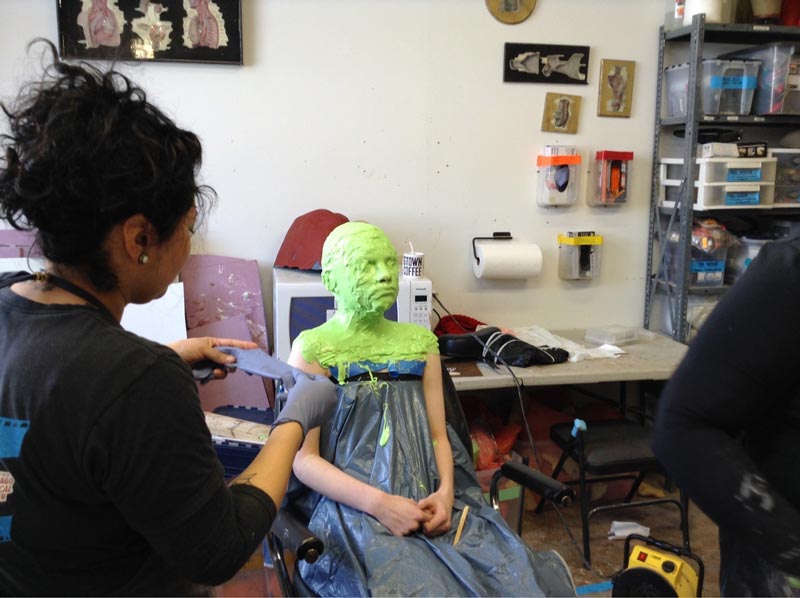
Our “skin suit” was made by merging Rhys’s face cast with a cast of a mannequin’s body of roughly the right size. Then a prosthetics company made the skin out of silicone. (That’s about the extent of my literacy in prosthetics makeup. I communicated mostly through screenshots of our reference skin suit from Under the Skin). My favorite part was having the skin suit delivered, which I then promptly used to disturb everyone in my life, including Rhys’s mother.

Then on the day, we had a body double inside the skin suit literally sewing it on. We did that so the angle of the hands would be just right for sewing — but it did mean that we had to confine ourselves to closeup so we weren’t revealing extraneous clothes or limbs or heads. It ended up working in our favor; the sequence of closeups really brought the visceral transformative process home for me.
Did you have any back up plans or other ideas to get this scene across?
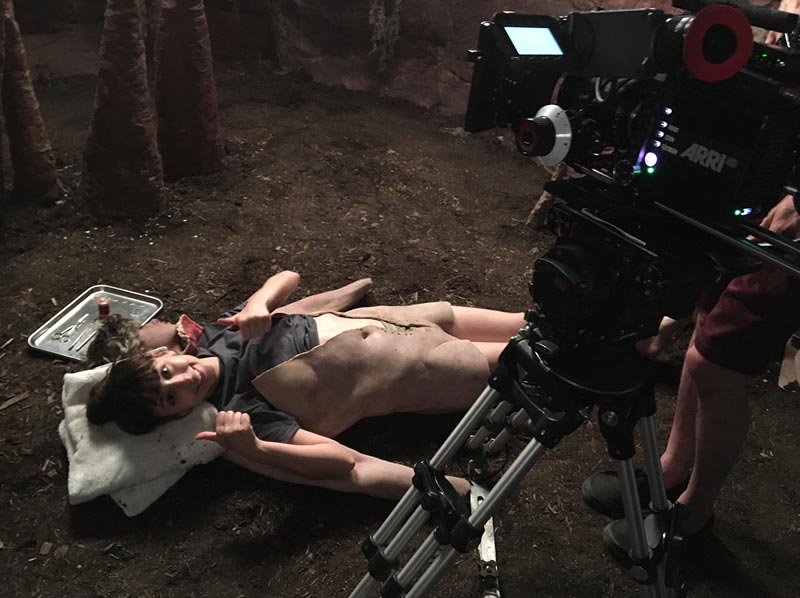
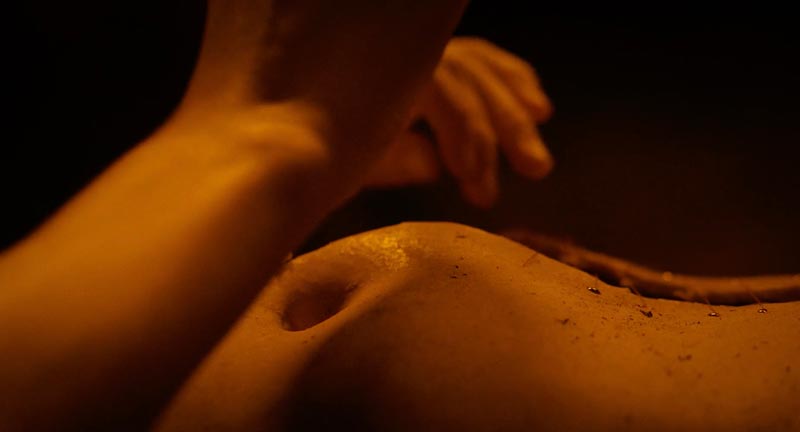
Audrey: Nope! For better or worse I would say this scene was the one I compromised least on. It was my thesis and I tried my hardest to push every visual and aural element to the service of the character’s self-discovery. It was a sort of all-or-nothing effort.
Thank you so much Audrey for all the extended insight and behind-the-scene photos. It’s truly incredibly how the film all came together, and particularly this scene which was able to take the story up to another level. We will definitely keep our eyes open on your next work!


